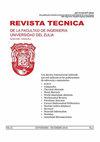用柑桔皮催化α-蒎烯环氧化物异构化制樟烯醛的研究
Q Engineering
Revista Tecnica De La Facultad De Ingenieria Universidad Del Zulia
Pub Date : 2023-01-01
DOI:10.22209/rt.v46a03
引用次数: 0
摘要
橘子皮是一种丰富的木质纤维素残渣,可以作为碳源,在萜烯及其氧化物转化为增值产品的过程中获得具有催化潜力的固体。本研究旨在评价α-蒎烯环氧化物异构化为樟烯醛使用催化剂从橘子皮。用ZnSO4.7H2O活化橘子皮,500℃热处理,得到OAC-Zn材料;在500°C (OC-500)温度下,从橘子皮中获得额外的固体。XRD显示OAC-Zn中存在ZnO和ZnS;TGA分析表明OAC-Zn和OC-500材料具有热稳定性;SEM图像显示了不同形貌的多孔表面,oac -500中存在微孔,OAC-Zn中存在介孔,物理氮吸附证实了这一点。EDX分析鉴定出OAC-Zn中含有C、O、Zn和S等元素。TPD-NH3测定结果表明,固体具有中、弱酸性。以ZnSO4.7H2O为活化剂,以橘子皮为原料制备中孔碳质材料,以96%的选择性合成了樟烯醛本文章由计算机程序翻译,如有差异,请以英文原文为准。
Evaluation of the Isomerization of α-Pinene Epoxide to Campholenic Aldehyde Using a Catalyst Obtained from Orange Peels (Citrus sinensis)
Orange peels (Citrus sinensis) are an abundant lignocellulosic residue that can be used as a carbon source to obtain solids with catalytic potential in the transformation of terpenes and their oxides into value-added products. This research seeks to evaluate the isomerization of α-pinene epoxide to campholenic aldehyde using a catalyst obtained from orange peels. The material OAC-Zn was obtained by activation of orange peel with ZnSO4.7H2O followed by thermal treatment at 500 °C; an additional solid was obtained from orange peel by pyrolysis at 500 °C (OC-500). XRD revealed the presence of ZnO and ZnS in OAC-Zn; TGA analysis indicated thermal stability in OAC-Zn and OC-500 materials; SEM images showed porous surfaces of different morphology, and the presence of microporosity in OC-500 and mesoporosity in the OAC-Zn that was confirmed by physical nitrogen adsorption. The elements C, O, Zn and S was identified in OAC-Zn by EDX analysis. The results of TPD-NH3 showed that the solids contained medium and weak acidity. Campholenic aldehyde was synthesized with a 96 % selectivity over a mesoporous carbonaceous material obtained from orange peels using ZnSO4.7H2O as activating agent
求助全文
通过发布文献求助,成功后即可免费获取论文全文。
去求助
来源期刊
CiteScore
0.13
自引率
0.00%
发文量
6
审稿时长
>12 weeks
期刊介绍:
La Revista Técnica de Ingeniería, es un órgano de publicaciones científicas y divulgativas de la Facultad de Ingeniería de la Universidad del Zulia. Es una Revista que se publica cuatrimestralmente en tres números correspondiente a un volumen anual. En esta se presentan destacados trabajos de investigación de la comunidad Científico-Tecnológica Nacional e Internacional, proveniente de Universidades, centros de Investigación e Institutos Nacionales y del Extranjero. Cada número circula el primer día de Enero, Mayo y Septiembre, espectivamente, desde el año 2016 al iniciar como Revista en formato digital.

 求助内容:
求助内容: 应助结果提醒方式:
应助结果提醒方式:


